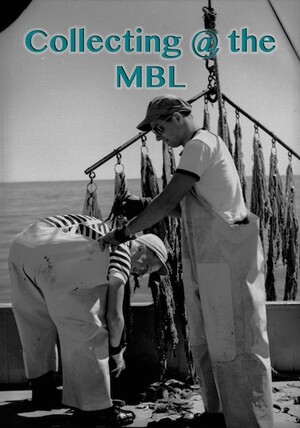Collecting efforts at the MBL were so successful that in addition to being used for research, the specimens collected off the shores of Woods Hole were sold all over the world. This started slowly, the first outside order occurred in 1896, when Williams College ordered approximately $125 worth of specimens (Maienschein, Exploring Life, 139). As this service continued to grow, catalogues that listed the specimens for sale provide insight into the kinds of creatures found near the MBL, with prices, details of preservation, and more. These catalogues, produced by the supply department, were described as catalogues that listed “A large stock of living and preserved materials for Zoology, Botany, and Embryology.”
An introduction to one of the catalogues shows an advanced collecting department with solid resources and tools. They state that the MBL’s location “is ideal for the collection of marine specimens, while an abundance of fresh water ponds, lakes, and streams yields an excellent supply of marine forms” (Biological Materials No. 57, 3). The text emphasizes that the MBL is “without doubt the best equipped marine collecting station in the United States” (Biological Materials No. 57, 3). The catalogues were separated into three major categories of organisms: living materials, preserved materials, and embryological materials. The living material section comes with a caution: don’t order a Monday delivery day as “shipments usually lay over the weekend in express stations and post-offices without proper care” (Biological Materials No. 57, 7).
Some of the more elaborate catalogues include photos of collectors in action, as well as the boats used to obtain the specimens. This helps give a human perspective to the catalogue, showing that these organisms are collected by people who are experienced and who care. This is explicitly emphasized in the introduction, where they say “each member of the staff of collectors and preparators is an expert in his own field, explaining to a large degree the uniformly good quality of the material furnished by the Supply Department” ((Biological Materials No. 57, 3).
Sale of these specimens has always had to be balanced carefully with collecting for the MBL researchers and students. The research always comes first, and resources are directed in that manner when they supplies are low.
- Dolgin, Elie, “The Squid Collector,” http://www.nature.com/news/not-your-average-technician-1.16785
- “John J. Valois, Obituary” http://www.mbl.edu/obituaries/john-j-valois/
- “John Valois, Longtime Specimen Collector and Naturalist, Honored at the Marine Biological Laboratory,” July 12, 2011, http://hermes.mbl.edu/news/press_releases/2011/2011_pr_07_12.html
- The Collecting Net Spring 2006, Vol. 2, No. 1 http://hermes.mbl.edu/publications/collecting_net/2006/06_01net06.html Accessed on July 16, 2015.
- Maienschein, Jane, and Ruth Davis. 100 years exploring life, 1888-1988: the Marine Biological Laboratory at Woods Hole. Jones and Bartlett Publishers, 1989.
- “MBL Moment with Dave Remsen,” MBL Catalyst January 2014, p 12-13. http://www.mbl.edu/wp-content/uploads/2013/07/Catalyst.Winter13-14.web_.pdf Accessed on July 16, 2015.
- Williams, Wendy. Kraken: The Curious, Exciting, and Slightly Disturbing Science of Squid. Abrams, 2011.

